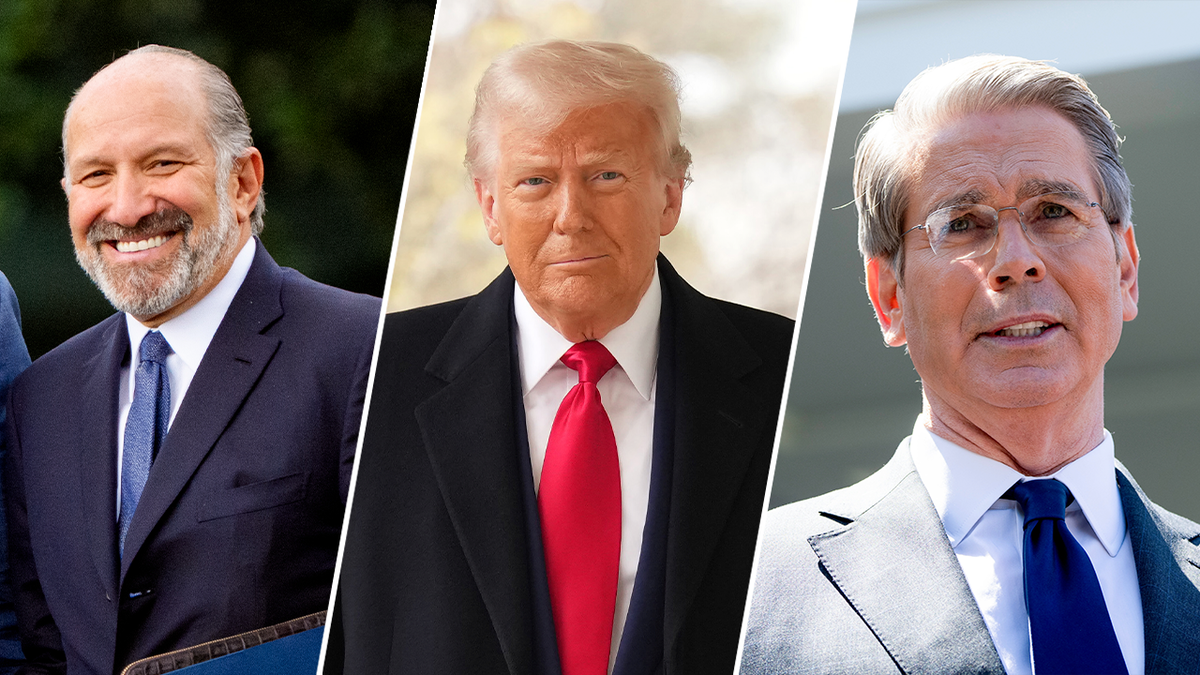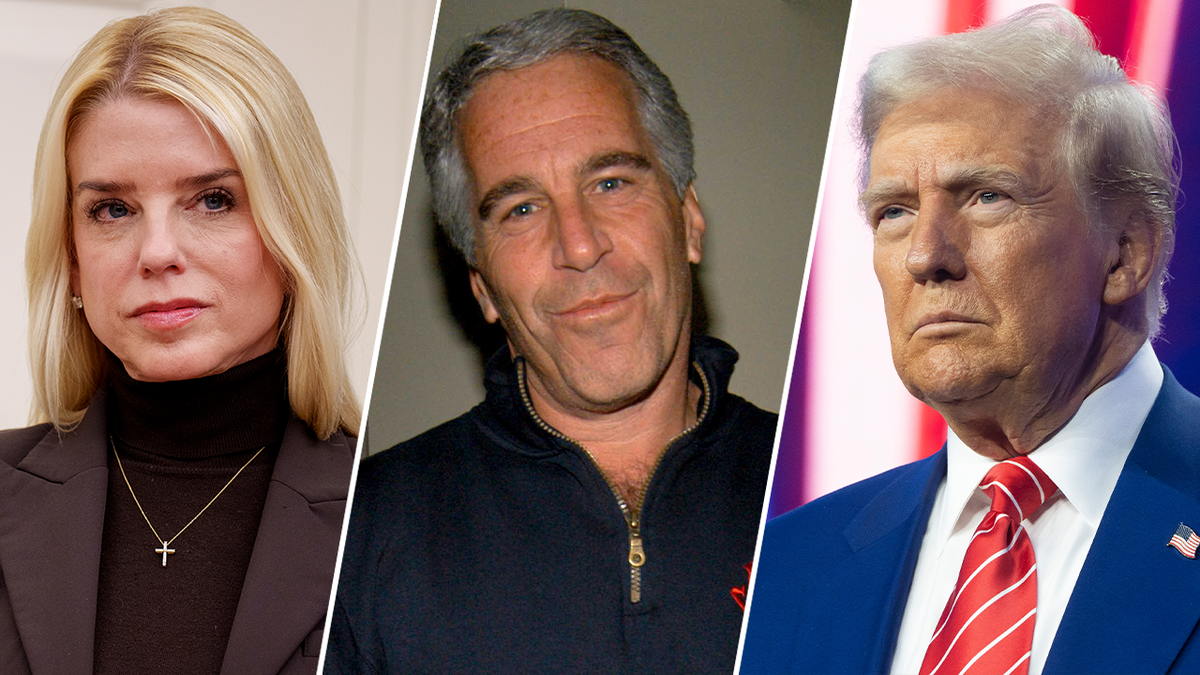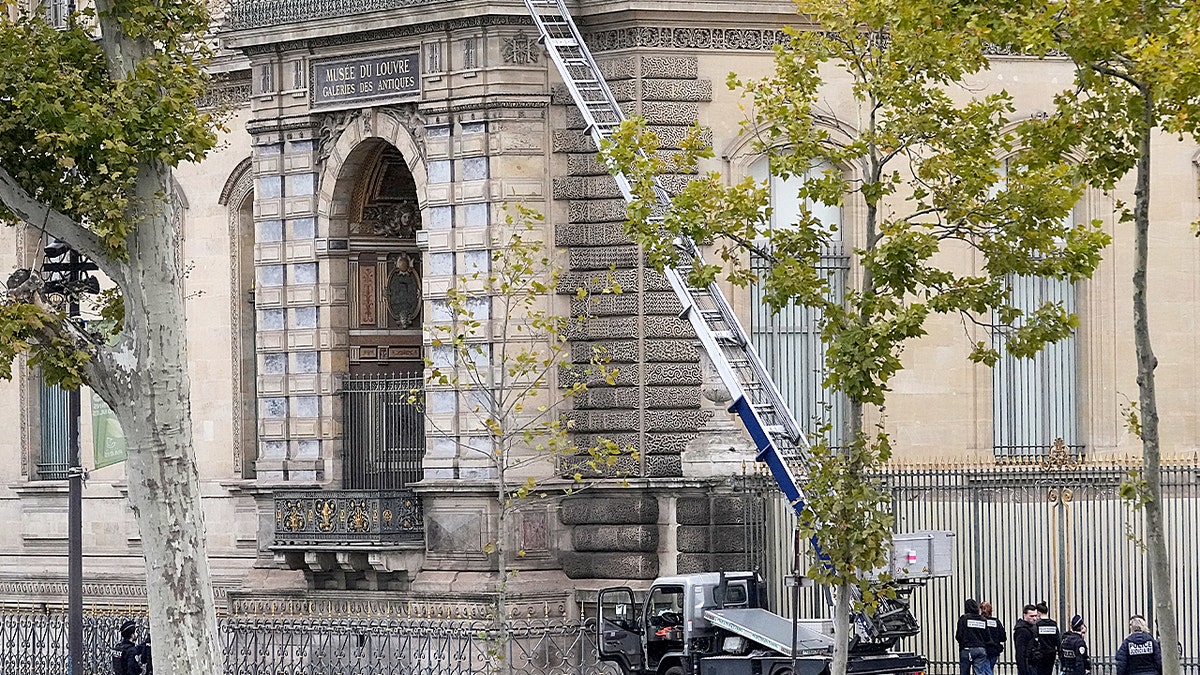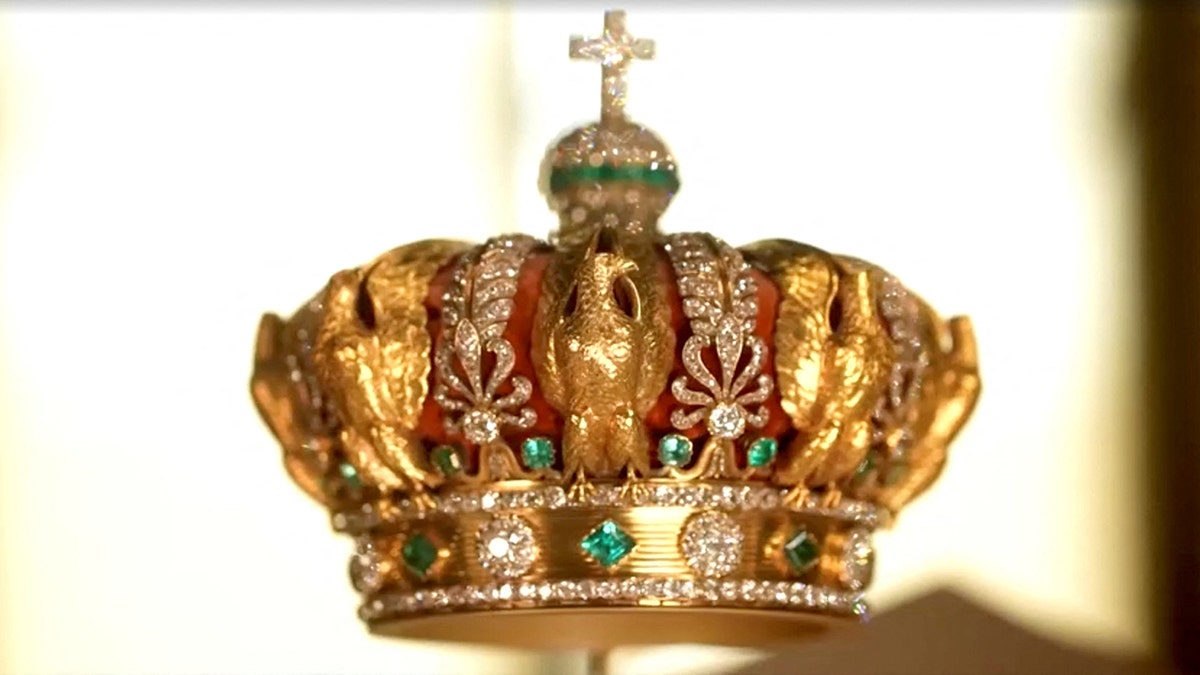INTERNACIONAL
Trump heads to Scotland, continues ironing out trade deals after notching six months back in office

NEWYou can now listen to Fox News articles!
President Donald Trump has been back in the Oval Office for a full six months as of Sunday, and is expected to keep a busy pace as he heads into his 27th week as commander-in-chief.
«Wow, time flies! Today is that Sixth Month Anniversary of my Second Term. Importantly, it’s being hailed as one of the most consequential periods of any President,» Trump wrote on social media on Sunday. «In other words, we got a lot of good and great things done, including ending numerous wars of Countries not related to us other than through Trade and/or, in certain cases, friendship,» he added on TRUTH Social. «Six months is not a long time to have totally revived a major Country.»
«One year ago our Country was DEAD, with almost no hope of revival. Today the USA is the ‘hottest’ and most respected Country anywhere in the World. Happy Anniversary!!!»
GOLF HAS A LONG HISTORY IN THE WHITE HOUSE — BUT FOR TRUMP, IT’S MORE THAN A PASTIME
President Donald Trump during a round of golf at his Turnberry course on May 2, 2023 in Turnberry, Scotland. (Getty Images)
Trump travels to Scotland
Ahead of Trump’s highly-anticipated trip to London in September, White House press secretary Karoline Leavitt announced that the president will travel to Scotland on Friday to visit Turnberry and Aberdeen, which are homes to Trump golf courses.
He will also meet again with UK Prime Minister Keir Starmer to continue ironing out the U.S.-UK trade deal.
«During the visit, President Trump will meet again with Prime Minister Starmer to refine the great trade deal that was brokered between the United States and the United Kingdom,» Leavitt said during a Thursday press briefing.
«The president and the first lady will travel to the United Kingdom for an official state visit from September 17 to September 19 later this fall. This will mark a truly unprecedented second state visit for President Trump and he is honored and looking forward to meeting with His Majesty the King at Windsor Castle,» Leavitt added, previewing the president’s highly-anticipated trip to London.
The UK’s monarch typically does not invite a U.S. president for a second state visit if they are re-elected to office, opting for more intimate meetings such as tea or lunch, making Trump’s second state visit unprecedented.
Scotland holds a special place in Trump’s life, as his mother, Mary Anne MacLeod Trump, was born and raised in Scotland before moving to Queens, New York.
UK TO ROLL OUT RED CARPET IN ‘UNPRECEDENTED’ SECOND TRUMP VISIT HOSTED BY KING CHARLES
The Trump Organization purchased the historic golf resort and hotel at Turnberry in 2014, and the Aberdeen golf club in 2012, which is set to open new course next month.
Trump traveled to the same golf courses in July 2018 under his first administration.

Commerce Secretary Lutnick, President Donald Trump, Secretary of the Treasury Bessent are ironing out trade deals. (Getty Images)
Tariff negotiations continue
A 90-day pause on tariffs was set to end July 9, after Trump first announced reciprocal tariffs on foreign nations in April. The administration announced earlier this month that foreign nations now face an Aug. 1 deadline or face higher tariffs.
Commerce Secretary Howard Lutnick told the media on Sunday that the next two weeks will showcase Trump delivering on his vow to roll out trade deals favorable to the U.S. economy.
«The next two weeks are going to be weeks for the record books. President Trump is going to deliver for the American people,» Lutnick said on CBS’ «Face the Nation.»
WILL TRUMP TRADE DEAL WITH UK EASE ECONOMIC JITTERS AND BOOST PRESIDENT’S POLL NUMBERS?
«They’re going to love the deals that President Trump and I are doing. I mean, they’re just going to love them. You know, the president figured out the right answer, and sent letters to these countries, said this is going to fix the trade deficit. This will go a long way to fixing the trade deficit, and that’s gotten these countries to the table and they’re going to open their markets or they’re going to pay the tariff. And if they open their markets, the opportunity for Americans to export, to grow the business, farmers, ranchers, fishermen, this is going to be…» he continued before remarking the next two weeks would be ones «for the record books.»

AG Bondi, Jeffrey Epstein, President Donald Trump. (Getty Images)
Epstein grand jury testimony release
Trump directed Attorney General Pam Bondi last week to release grand jury transcripts in the case of Jeffrey Epstein after a memo released earlier this month concluded that there is «no credible evidence found that Epstein blackmailed prominent individuals,» or kept a «client list» of such individuals after years of Trump surrogates vowing to reveal the Epstein’s alleged secrets.
Longtime conservatives and supporters of Trump subsequently slammed the memo, and sounded off on social media that Epstein won’t «go away.»
LEGAL PATHWAY CLEARLY EXISTS FOR TRUMP’S REQUEST TO MAKE EPSTEIN GRAND JURY TESTIMONY PUBLIC
«Based on the ridiculous amount of publicity given to Jeffrey Epstein, I have asked Attorney General Pam Bondi to produce any and all pertinent Grand Testimony, subject to Court approval,» Trump wrote on Truth Social late Thursday last week. «This SCAM, perpetuated by the Democrats, should end, right now!»
It is unclear if Bondi could convince a judge to release the grand jury testimony, but the Department of Justice reported on Friday that it formally moved to unseal long-secret grand jury transcripts.
Deputy Attorney General Todd Blanche submitted the motion in Manhattan federal court, urging a judge to release the transcripts from Epstein’s 2019 grand jury proceedings and those from the prosecution of Epstein’s convicted associate, Ghislaine Maxwell, as part of a new transparency push by the department.
CLICK HERE TO GET THE FOX NEWS APP
Epstein was a notorious predator who pleaded guilty to procuring underage girls for prostitution in 2008, before he was arrested in 2019 on new federal charges of sex trafficking minors and conspiracy to engage in sex trafficking of minors. He was found dead in his New York City jail cell in 2019 of suicide, according to Trump officials.
Fox News Digital’s Bradford Betz and Jasmine Baehr contributed to this report.
INTERNACIONAL
Bolivia: los desafíos del próximo gobierno de Rodrigo Paz

El candidato de centroizquierda del Partido Demócrata Cristiano (PDC), Rodrigo Paz, se impuso con el 54% de los votos al obtener casi diez puntos de ventaja sobre su rival, Jorge Tuto Quiroga. Este triunfo no solo pone fin a dos décadas de hegemonía del Movimiento al Socialismo (MAS), liderado por Evo Morales, sino que también confiere una sólida legitimidad a la nueva administración. Sin embargo, los retos que se vislumbran en el ámbito político, para el gobierno de Paz, que asumirá el 9 de noviembre próximo, son considerables.
La primera gran prueba para Paz será la consolidación de su base de poder en el legislativo. La principal debilidad radica en que el Partido Demócrata Cristiano (PDC) funcionó como un «vientre de alquiler», una estructura instrumental sin arraigo social o nacional que respaldara la candidatura. Aunque Paz capitalizó el voto del «núcleo duro» del MAS en varias regiones, no heredó la estructura partidaria ni la capacidad de movilización de su predecesor. Esta debilidad partidaria genera dos puntos de fricción.
Dentro de la bancada del PDC podrían emerger múltiples facciones, cada una buscando cuotas de poder. Las tensiones que ya se evidenciaron entre Paz y su compañero de fórmula, Edman Lara, durante la campaña podrían exacerbarse, complicando la gobernanza del Ejecutivo y la gestión de la Asamblea Legislativa Plurinacional (ALP).
Así mismo, Paz deberá negociar consensos con otros partidos. Si bien cuenta con el respaldo explícito de Unidad de Samuel Doria Medina, que se concretó en el balotaje, las relaciones con el partido de Quiroga, LIBRE, son más tensas. Aunque comparten afinidades ideológicas (economía de mercado, apertura exterior, respeto a las instituciones), las secuelas de la agresiva campaña electoral dificultarán una posible alianza. La mayoría simple en la ALP está asegurada con la alianza del PDC con Unidad, pero para reformas de mayor calado, como un eventual cambio constitucional, necesita acercarse y pactar con LIBRE, que posee la llave de los dos tercios.
Un segundo desafío crucial será la relación con los poderosos y decisivos movimientos sociales. El apoyo de estas organizaciones a la fórmula del PDC, si bien fue un factor determinante para su victoria, no garantiza una lealtad incondicional. Con un notable historial de empoderamiento político, estas organizaciones buscarán proteger sus privilegios y, si se sienten desfavorecidas, podrían recurrir a movilizaciones que amenacen la estabilidad social.
Su apoyo será fundamental para legitimar cualquier ajuste económico y social. El manejo de las tensiones con estos sectores y la forma en que el nuevo gobierno gestione el legado del «masismo» serán vitales para mantener la estabilidad del país. En muchos sentidos estas son fuerzas antisistema que pueden bloquear el gobierno de Paz.
La capacidad del nuevo gobierno para emprender cualquier política económica y social está condicionada por la superación de estos dos desafíos políticos: necesita un legislativo alineado con el Ejecutivo y una articulación efectiva con los movimientos sociales.
Una vez resueltos los obstáculos políticos, el siguiente gran desafío es el económico. Paz recibe un país en crisis, con escasez de dólares, inflación y reservas internacionales en descenso. La eliminación de los subsidios a los combustibles, una medida crucial para la sostenibilidad fiscal, podría provocar un grave descontento social. El precedente de 2010, cuando Evo Morales tuvo que dar marcha atrás a un ajuste similar por la presión de los movimientos sociales, subraya la delicadeza de esta situación.
El 19 de octubre no solo marcó el fin de una era política, sino que también abrió un interrogante crucial: ¿Se encamina Bolivia hacia una verdadera transformación o hacia una continuación del modelo del MAS por otros medios?
La respuesta a esta pregunta definirá la dirección del país en los próximos años. Si el nuevo gobierno de Rodrigo Paz opta por la primera vía, será indispensable abordar reformas estructurales que permitan fortalecer las instituciones democrática. Estas reformas incluirían: la reducción del presidencialismo y generar un sistema de justicia libre de la influencia política.
Si, por el contrario, el gobierno de Paz se concentra únicamente en la solución de los problemas económicos más apremiantes —como la inflación y la escasez de hidrocarburos—, ignorando sus causas profundas, el modelo del MAS podría persistir. Este modelo se caracteriza por una economía de base estrecha, sin una industrialización significativa ni una generación estable de empleo.
Es probable que el MAS, ahora sin mayoría parlamentaria, ofrezca un margen de maniobra inicial a la nueva administración. Sin embargo, el panorama político no estará completo hasta las elecciones subnacionales del próximo año. Solo entonces se definirá con mayor claridad la nueva correlación de fuerzas en el país. Por ahora, Bolivia da sus primeros pasos fuera del dominio hegemónico del MAS y de la sombra de Morales.
Flores es Cientista político. Profesor e investigador de la Universidad San Francisco Xavier (Sucre, Bolivia). Doctor en Ciencias Sociales con mención en Estudios Políticos por FLACSO-Ecuador.
© Clarín y Latinoamerica21.com
INTERNACIONAL
New video purportedly shows Louvre thieves in action during brazen daytime heist

NEWYou can now listen to Fox News articles!
A new video has emerged showing what could be the Louvre thieves in action as they carried out Sunday’s daylight robbery at Paris’s world-famous museum.
The footage, obtained by French broadcaster BFMTV, purportedly shows what has been called one of the most brazen art thefts in recent memory.
The short clip appears to show someone inside the Louvre’s Apollo Gallery, which was home to some of the museum’s most priceless treasures.
Footage taken by an anonymous bystander shows a person in a bright yellow jacket standing beside a glass display case.
BRAZEN LOUVRE ROBBERY CREW MAY HAVE BEEN HIRED BY COLLECTOR, PROSECUTOR SAYS
New footage purportedly shows a person in a yellow jacket beside a display case amid the Louvre heist in Paris. (BFMTV)
The amateur footage was replayed for BFMTV, who filmed that phone’s screen and verified it Sunday. The Associated Press has not been able to independently confirm its authenticity.
According to French authorities, the thieves executed a highly coordinated operation that unfolded just after the museum opened to the public in the morning.
At around 9:30 a.m., thieves used a basket lift to reach the Louvre’s facade, forcing open a window to gain entry to the Apollo Gallery, which contains displays of the royal jewels.
LOUVRE MUSEUM CLOSED AFTER ROBBERY, FRENCH OFFICIAL SAYS

Thieves executed a daytime heist at the Louvre Museum, stealing French crown jewels. (Thibault Camus : AP)
According to reports, the group made off with jewels once belonging to Napoleon III’s court, including pieces from Empress Eugénie’s personal collection.
«They breached through a window and made this really brazen. These guys are fast and moving quickly with a purpose, and they breach, and they get in there really quickly,» former FBI Art Crime expert Tim Carpenter told Fox News Digital.
After the heist, Interior Minister Laurent Nuñez spoke to radio station France Inter and said the thieves «entered from the outside using a basket lift» and «a disc cutter» to slice through glass panes containing precious jewels.
TOURISM SAFETY FEARS RISE AFTER MUSEUM THIEF STEALS PHARAOH’S PRICELESS BRACELET: 4 THINGS TO KNOW

A crown worn by French Empress Eugenie, which was targeted by thieves during a heist at Paris’ Louvre Museum on Oct. 19, 2025 but was dropped during their escape, on display in this undated still frame from a video. (Louvre Museum/Handout via Reuters)
«The investigation has begun, and a detailed list of the stolen items is being compiled,» the ministry also said in a statement. «Beyond their market value, these items have inestimable heritage and historical value.»
CLICK HERE TO GET THE FOX NEWS APP
The Louvre remained closed on Monday as investigators combed through the scene and reviewed surveillance footage.
Fox News Digital has reached out to the Louvre Museum and the Ministry of Culture for comment.
travel,crime,museums exhibits,europe
INTERNACIONAL
El hallazgo de un mineral misterioso en la superficie de Marte da nuevas pistas sobre su pasado geológico

Durante más de una década, científicos dedicados al estudio de Marte permanecieron perplejos ante una pequeña anomalía registrada por un espectrómetro orbital. Todo comenzó con un número: 2,236 micras, un pico de luz que no coincidía con ningún mineral conocido en el registro marciano.
Parecía un simple dato perdido en la inmensidad de las mediciones, sin embargo, ocultaba un secreto mayor: algo en la superficie reflejaba la luz de una manera imposible de explicar con el conocimiento existente.
Un estudio publicado en Nature Communications, arrojó luz sobre este misterio. Tras años de experimentos, análisis y comparaciones minuciosas, los científicos identificaron el responsable de esa firma espectral única: el hidroxosulfato férrico (Fe³⁺SO₄OH).
Este mineral extraordinario no aparece de forma espontánea en la naturaleza marciana, sino que surge cuando compuestos de hierro y azufre hidratados son sometidos a procesos de calor y oxidación intensos. La presencia del hidroxosulfato es, por tanto, una prueba directa de episodios de calor extremo y ambientes oxidantes en el pasado de Marte.

El descubrimiento se localizó en zonas específicas: Aram Chaos y el altiplano de Juventae, ambos enclavados en el gigantesco sistema de Valles Marineris. Estos puntos se convirtieron en ventanas hacia el pasado térmico del planeta rojo. El espectrómetro CRISM, instrumento a bordo de la nave en órbita marciana, se encargó de detectar la extraña señal.
Según detalló J. L. Bishop: “El patrón completo importaba más que un solo número”. Allí donde surgía la marca de 2,236 micras, también afloraban otras bandas características a 1,49; 1,83; 2,19; 2,37; 2,61 y 2,89 micras.
En Aram Chaos, esas bandas resultaban más nítidas y se encontraban junto a sulfatos monohidratados como la kieserita (MgSO₄·H₂O) y la szomolnokita (FeSO₄·H₂O), mientras que en Juventae el rastro se diluía entre sulfatos polihidratados. Esa diferencia de pureza revelaba historias térmicas distintas para cada afloramiento, lo que permitió reconstruir las condiciones bajo las cuales se formaron los minerales.
Para comprobar la hipótesis de que la señal provenía de un hidroxosulfato férrico, los investigadores replicaron en laboratorio condiciones plausibles del Marte primitivo. Calentaron sulfatos ferrosos hidratados, como la rozenita (FeSO₄·4H₂O) y la szomolnokita, entre 100 y 300 °C, bajo la presencia de oxígeno.

El resultado fue contundente: apareció un sólido anaranjado, el hidroxosulfato férrico, con exactamente la misma colección de bandas espectrales, incluyendo el icónico pico de 2,236 micras que había sido detectado por CRISM.
El experimento demostró que el agua aceleró la conversión mineral y que, sin oxígeno, la reacción no llegaba a desarrollarse. “El mineral nace de calentar y oxidar”, explicó J. L. Bishop. Solo en presencia de oxígeno, el Fe²⁺ se convierte en Fe³⁺, lo que permite la formación del hidroxosulfato y del grupo OH característico del nuevo compuesto.
La estabilidad del Fe³⁺SO₄OH bajo condiciones cercanas a las marcianas —bajas temperaturas y presión reducida— también se comprobó. Solo se detectaron pequeños desplazamientos de bandas, pero la identidad espectral permaneció reconocible.
Los análisis mostraron que la reacción es prácticamente inexistente por debajo de 50 °C, mientras que a 100 °C se da muy lentamente, y a 200–300 °C progresa de forma notable. El pico de 2,236 micras actúa así como un termómetro mineral de antiguos episodios geotérmicos y volcánicos en el planeta rojo.

La posición del hidroxosulfato férrico dentro de la estratigrafía fue esencial para descifrar el origen de los episodios térmicos. En Aram Chaos, el mineral se encuentra por debajo de los sulfatos monohidratados, cerca del lecho rocoso.
Esto sugiere que la fuente de calor provino desde abajo, asociada a actividad geotérmica, en pleno terreno caótico modelado por catástrofes de agua líquida y sedimentos depositados hace aproximadamente 3.000 millones de años.
Por contraste, en Juventae, el Fe³⁺SO₄OH aparece sobre los sulfatos polihidratados y a menudo también en la base, intercalado entre capas basálticas. Aquí, la hipótesis se inclina por un calentamiento desde arriba provocado por derrames de lava o acumulación de cenizas volcánicas. La erosión posterior, causada por el viento marciano, dejó expuestas estas unidades, visibles ahora como parches de decenas de metros.
“En Aram, la pureza espectral sigue a la pureza geológica”, comentó el equipo de Nature Communications. El contexto geológico determina la nitidez de la señal: allí donde el calor fue más directo y las condiciones más estables, el hidroxosulfato aparece aislado y bien definido.

El análisis revela que la presencia de Fe³⁺SO₄OH señala episodios en los que coincidieron agua salina, calor y oxígeno: condiciones clave para procesos geoquímicos sofisticados.
Estos pulsos térmicos no suponen la existencia de mares templados estables, pero sí de focos localizados de energía capaces de transformar químicamente los sedimentos. Así, Marte demuestra haber sido un mundo con una historia térmica mucho más compleja de lo que se pensaba. Según el estudio, “el clima marciano tuvo pulsos”.
Algunos detalles técnicos merecen mención. La resolución limitada del espectrómetro CRISM implica que parte de las señales pueden representar mezclas finas, ya que la presencia de magnesio desplaza levemente las bandas y complica la identificación química exacta.
Aun así, la coincidencia entre los resultados obtenidos en órbita y los recreados en laboratorio, junto con la correspondencia morfológica y estratigráfica, consolidan la interpretación.
nasa,national aeronautics and space administration,sci,space

 CHIMENTOS2 días ago
CHIMENTOS2 días agoLa fuerte actitud de Manu Urcera con Indiana Cubero que reveló la verdad de la interna familiar: “El saludo del piloto a la hija de Nicole Neumann por su cumpleaños”

 POLITICA2 días ago
POLITICA2 días agoUn juez federal rechazó el habeas corpus presentado por Lázaro Báez y ordenó trasladarlo a la cárcel de Ezeiza

 CHIMENTOS1 día ago
CHIMENTOS1 día agoLa cruda confesión del Turco Naim a 1 año de la separación de Emilia Attias: «Me di cuenta que hay que aprender a estar solo»













